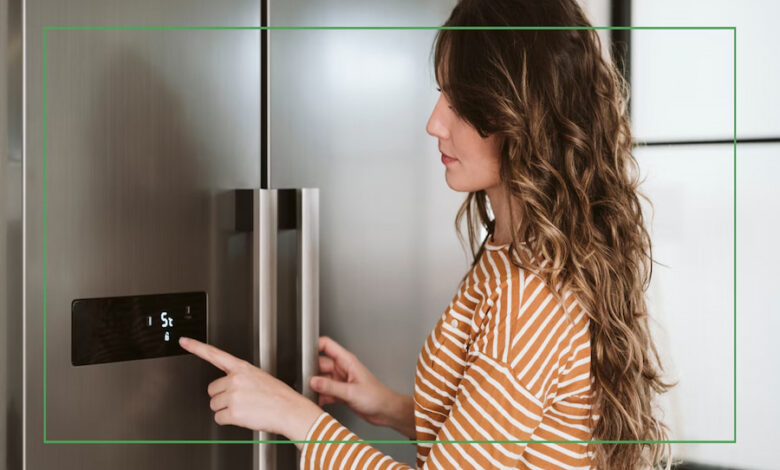Maximizing Your Freezer Efficiency: Tips and Tricks

Freezer Efficiency-Efficient organisation within your freezer is essential for maximising space and airflow, ensuring that items remain properly frozen and easily accessible. Start by categorising items based on type (meats, vegetables, fruits, etc.) and assign designated areas for each category. Utilise stackable containers, baskets, and shelves to create layers within the freezer which is Taylor C713 Soft Serve Freezers, avoiding overcrowding and allowing air to circulate freely. By arranging items strategically, you’ll not only make the most of the available space but also make it easier to locate specific items without having to dig through a cluttered freezer.
Maintain Proper Temperature Settings:
The optimal temperature for a freezer is typically around -18°C or 0°F. It’s crucial to regularly check and calibrate the thermostat to ensure it accurately reflects the internal temperature. Fluctuations or inaccuracies in temperature settings can lead to food spoilage and increased energy consumption. Invest in a reliable thermometer to periodically monitor the temperature inside the freezer and make adjustments as necessary. By maintaining precise temperature control, you’ll ensure that your frozen goods remain safe for consumption and extend their shelf life.
Seal Gaps and Leaks:
Inspecting the seals and gaskets on your freezer doors is vital for preserving the cold air inside and preventing warm air from entering. Over time, seals may wear out or develop cracks, compromising the freezer’s efficiency. Check for signs of damage, such as tears, gaps, or stiffness, and replace worn seals promptly. Additionally, clean the seals regularly to remove any debris or residue that could interfere with their effectiveness. Properly sealed doors not only maintain consistent temperature levels but also reduce energy consumption by preventing cold air from escaping.
Practice FIFO (First In, First Out):
Implementing a FIFO system in your freezer helps minimise food wastage and ensures that items are used before they expire. Label items with purchase or storage dates and organise them in a way that older items are easily accessible. When adding new items to the freezer, place them behind older ones to prioritise their usage. Regularly review the contents of your freezer and rotate items accordingly to prevent older items from being forgotten and becoming freezer-burned or expired. By following the FIFO principle, you’ll maintain a well-organized freezer and optimise the freshness of your frozen foods.
Utilize Vacuum Sealing:
Investing in a vacuum sealer can significantly enhance the efficiency and longevity of your frozen foods. Vacuum sealing removes excess air from packaging, which helps prevent freezer burn and preserves the quality of the food for a longer period. By removing air, vacuum-sealed bags also reduce the risk of crystallisation, which can affect the taste and texture of frozen items. Additionally, vacuum-sealed packages take up less space in the freezer, allowing you to maximise storage capacity. This method is particularly beneficial for storing meats, fish, and other perishable items, as it helps maintain their flavour and freshness over time.
Regularly Defrost and Clean:
Routine defrosting and cleaning are essential maintenance tasks for ensuring the optimal performance of your freezer. Ice buildup can reduce the freezer efficiency, leading to increased energy consumption and potential damage to the appliance. Plan regular defrosting sessions based on the manufacturer’s recommendations or when ice buildup becomes noticeable. During defrosting, remove all items from the freezer and follow the manufacturer’s instructions for defrosting safely. Once defrosted, clean the interior surfaces of the freezer with a mild detergent and warm water to remove any lingering debris, spills, or odours. Regular cleaning not only helps preserve food quality but also extends the freezer efficiency.
Strategically Place Temperature-Sensitive Items:
When organising your freezer, it’s essential to consider the placement of temperature-sensitive items to maintain their quality and integrity. Items such as ice cream, desserts, and delicate produce are more susceptible to temperature fluctuations, so it’s best to store them away from the freezer door. The area closest to the freezer door experiences the most temperature variation when the door is opened frequently, which can compromise the quality of these sensitive items. Instead, place temperature-sensitive items deeper inside the freezer where temperatures remain more stable. By strategically positioning these items, you can ensure that they stay frozen solid and maintain their texture and flavour.
Summary:
Upgrading to an energy-efficient freezer model is a proactive step towards maximising freezer efficiency and reducing energy consumption. Energy-efficient freezers are designed with advanced features such as improved insulation, LED lighting, and optimised cooling systems, which help minimise heat transfer and maintain consistent temperatures. Look for freezers with ENERGY STAR certification, as they meet strict energy efficiency guidelines set by the Environmental Protection Agency (EPA). While energy-efficient models may have a higher upfront cost, they offer long-term savings on electricity bills and contribute to environmental sustainability by reducing greenhouse gas emissions. When selecting a new freezer, consider factors such as size, capacity, and additional features to find the best option to meet your needs while minimising energy usage. Visit Post Wishers for more informative blogs.


